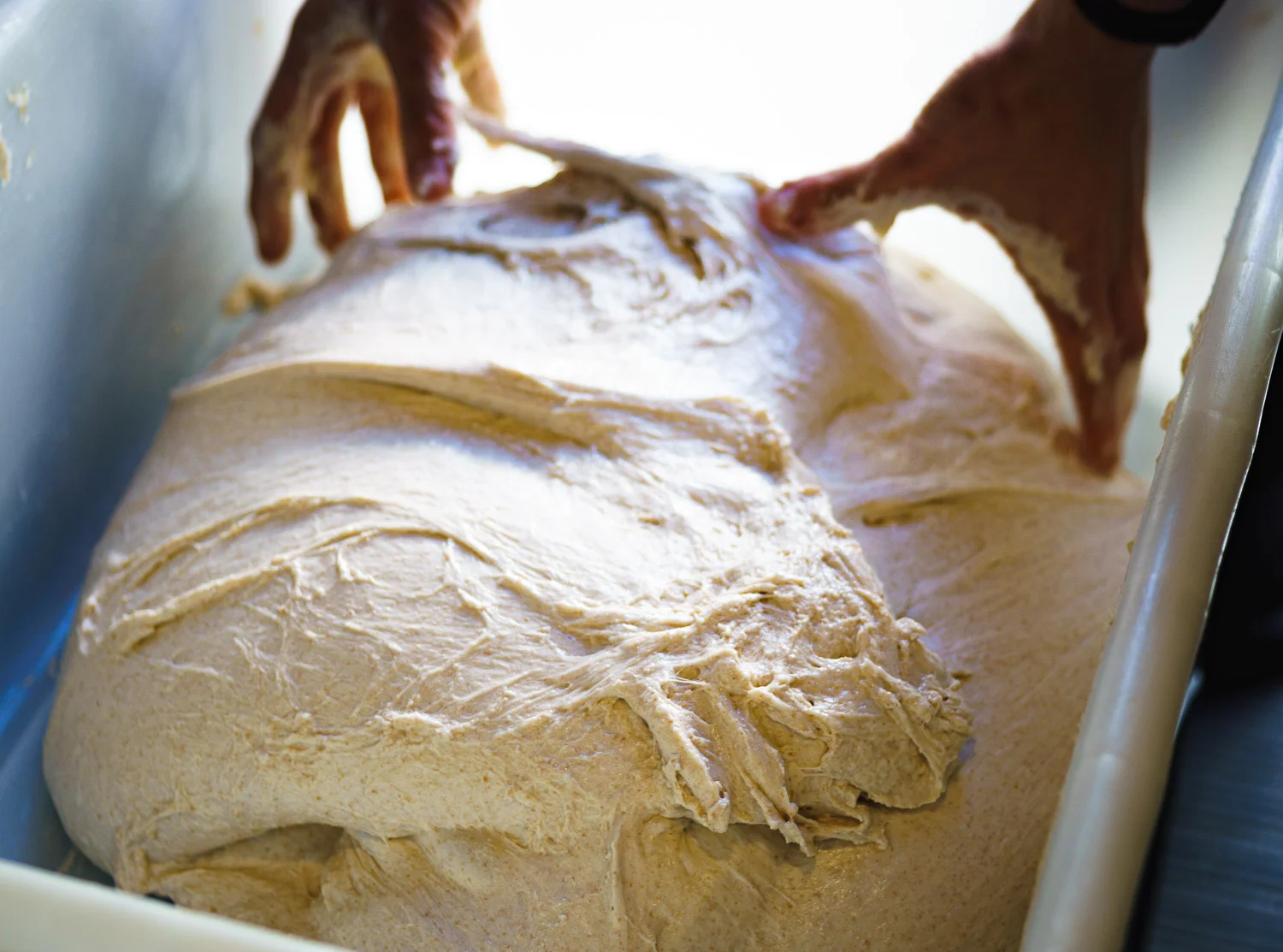Bread FAQ Part 2: What's your hydration?
Hydration, or how much water a baker uses to a given amount of flour when making dough, always seems to be a hot topic in the bread world. The trend over the last few years seems to be to push hydration levels to the max possible. Why is this? First, a lot of bakers feel that hydration is the key to an open crumb. Just get hydration right or work with a wet enough dough and you will get the crumb of your dreams is the idea(See my last article for more on this). Another reason might be for health purposes as bread made with a well hydrated dough is thought to be more digestible. A third reason, and this is the one I most subscribe to, is for textural reasons. Bread made with a lot of water can have insanely soft, almost magic like, texture. So what hydration do I use? Well, it depends on a lot of factors. First, every flour, and even different batches of the same flour, have different water needs. Some flours can absorb 90% hydration and still feel stiff and others will start feeling slack at 70%.
Weather is another factor. Very dry days will require more water and humid days will require less. It also depends on the bread I'm trying to make as not every bread calls for putting in the most water the flour can possibly handle. Baguettes, for instance, are a bread that does much better in my opinion with a lower hydration as they will shape and score much nicer while still having a beautiful interior.
All these factors will have an effect on what hydration I want to use. Almost every batch of bread I make will have a slightly different hydration based on the present conditions. Current batch of flour not absorbing as much water as the last batch? Go a bit less. Very hot, dry day? Go more. A draft dried out the top of the dough while it was autolysing? Gonna need more water than usual.
This dough might look like super hydrated slop but it's not actually that wet, just very relaxed. The photo below is the same dough after folding.
So what am I actually looking for in the dough to know when the hydration is right? It all comes down to the feel of the dough. I try to make many of my doughs feel similar. Wet but not too wet. I try to put in enough water to somewhat push the limits of the flour but not so much that I sacrifice the volume of the bread. There is always some point at which you can put in too much water where no matter how strong you make the dough the loaf will not hold its shape and will flatten out during baking. I try to avoid this. I try to find the exact point where the bread will still bake up proud and tall while putting as much water in as I can. I actually think this level of hydration is quite a bit lower than people expect it to be. I also find that if you pass the point of this optimal hydration you will actually end up with a worse crumb and a flatter loaf.
Same dough as above after folding.
So how do you find this hydration? Well to be honest, mostly trial and error. You need to make the same dough over and over many times while taking a moment to feel the dough every step of the way. You need to try pushing the hydration sometimes and potentially making a bad batch of bread. After awhile you will start to find the breaking point of your flour. Use other baker's hydration numbers only as a rough guide to get you in the general area of hydration but do the fine tuning yourself. For those who want some ballpark numbers to get started: If we're talking a "country" sourdough around 80%. If we're talking 100% whole wheat around 96%. If we're talking a baguette around 70%. Just keep in mind that these number may lead to drastically different results for you than for me! Happy baking!



